With 10 years experience working at Cullifords and seeing hundreds (if not thousands) of customers choosing their new work surface. There are certain questions or statements we hear from customers time and time again when making a decision. Probably the most common is “we can’t have marble in our kitchen can we?” or “we have been told by our designer/kitchen company that we can’t have marble”.
Having read a few articles and done various tests on untreated natural materials, there was little argument from myself on the matter. I would then move on to the huge number of Hard Quartzite, Granite, Ultra-compact or Engineered Quartz options available to see in our yard.
Alongside this reluctance to consider marble, we have many customers adamant on choosing it for their own kitchen. So this begs the question “What is it really like living with a marble work surface?”

Selection
To answer this question with any degree of accuracy, it’s beneficial to have personal experience of using a marble surface. So, when myself and my family were fortunate enough to have a new kitchen going in, I thought it was a great opportunity to live with a marble work surface and see for myself how it performs. By having it myself, I could see if it should be so easily dismissed. Please note my wife was fully on board with this experiment!
Having a North facing garden, we wanted a light surface but not overly busy. This led us to the Cullifords staple, Carrara marble. Carrara is one of the most popular and readily available white marbles and therefore relatively sustainable. Particularly when comparing to Quartz from the far east for example. This was definitely a factor in our decision making. Having a look at the numerous blocks of Cararra Cullifords had in stock, we settled for a Block 6264.
With the knowledge I did have of Carrara and most marbles being used in a kitchen setting, we decided on a honed finish. The main reason being, it helps disguise the potential etch marks that can occur when acidic substances make contact with the surface. With a polished finish, these marks would be more noticeable on areas of reflected light (see images further down in the blog).

Sealing
After installation, it’s advisable to allow the material to dry out for a few days prior to sealing. A surface can appear to be dry to the touch but the use of a moisture detector is useful for clarity. Luckily in our case, we had plenty of time after worktop installation and moving back in. This meant it was guaranteed to be very dry before it got its first use.

In most cases, the fabricator will seal your work surface after installation. They will determine how much sealer should be used dependent on the material. When looking at sealers, I was keen to use what we believe are the best sealers available and I opted for Dry Treat Dense Stone Impregnating Sealer. After checking the coverage for the type of material (Honed marble/10m2 per litre) I was having, I was ready to seal.
If you are not confident on carrying this process out yourself, then the stone fabricator will be happy to do it. In this instance, I was keen to understand a little more about the process, so undertook the job myself. Detailed instructions are available on the Dry Treat website as well as various Youtube videos that can help you do the job properly.
After sealing, the surface mustn’t be used for at least 24 hours and then will fully cure completely a few weeks afterwards. When sealing, the material initially went quite a lot darker. To my great relief the stone was back to its normal colour the next day.

Practical Use
Having seen marble taking in water (in the form of raindrops) at our yard on countless occasions, I was astonished at how well the sealer performed in repelling water. Any spillage beaded up on the surface as pictured above (links to videos). So the good news is that the sealer repels water, but what about dreaded stains like tea, coffee, soy sauce etc?

After 6 weeks of living and regular cooking, I am yet to report a permanent stain of any kind! I should note that we are adventurous cooks using a multitude of spices and sauces regularly.
On one occasion while we were baking cakes with the kids, an attachment for the mixer was left on the surface. The attachment must have had butter or oil on it, and was subsequently left on the top for a prolonged period. This resulted in an oily mark in the stone which I unfortunately didn’t get a photo of. In this instance I made a poultice from Dry Treat Oxy_Klenza. This was a very straight forward process and to my amazement, the oil mark disappeared after 24hours.
Etching
So now you might be thinking, “Great! there’s no reason not to get a marble work surface”. Well, despite the amazing results from my impregnating sealer, there are downsides to having marble. One issue we have experienced a few times is acid etching.
Due to the high percentage of calcium (or calcite) in most marbles, it can be susceptible to etching from acidic substances. Although the sealer does a great job of repelling substances, contact is still made on the surface. This can lead to the acidic liquid (fruit juice, vinegar etc) eating the calcium in the stone and leaving a patchy mark as shown below. The mark shown in the image is around 3 weeks old and is less noticeable than when it first occurred. Also, as stated earlier in the blog, the kitchen faces North and therefore not a huge amount of light flows in. This undoubtedly makes the marks more difficult to see.
There are a few of these in the kitchen but to notice them, you would need to bend down to a certain level and catch it in the light from the window. As shown in the image below on the right, it is unnoticeable from different angles.


Scratching
Another potential sticking point would be that generally speaking, marble is softer and susceptible to scratching. At Cullifords, we put marble into three categories: Hard marble, normal marble and decorative marble. Carrara would fit into the normal category. The harder types will be less easy to scratch and decorative more so. Where we had kept a ceramic utensil holder and it being moved, this has lead to a couple of scratches. However, as you can see in the image on the right, they are a little less noticeable in reality.
The benefit of marble however is that the surface can be polished/honed in situ. There are companies who can come out and bring it back to it’s former glory if you want. This cannot be done with a quartz or porcelain surface in the same manner. In our case, we are quite happy to live with the odd mark/scratch as it stands.


Taroli
Taroli is a term used in the stone industry for a natural occurrence in marble and most prominently in Carrara. They are small sand holes or pits in the surface of the stone. All stone blocks that are quarried are treated by introducing a clear or colour matched resin. This will fill any imperfections that are inevitable with natural stone to create a smooth surface. Some of these pits are so small that resin cannot take hold and therefore a small hole is present. This is completely normal and does not mean that your slab of marble is defective in any way.
Some blocks have more Taroli than others and at Cullifords, we lay out our slabs on special racking systems. This allows you to view the entire slab carefully and make a much more informed decision.
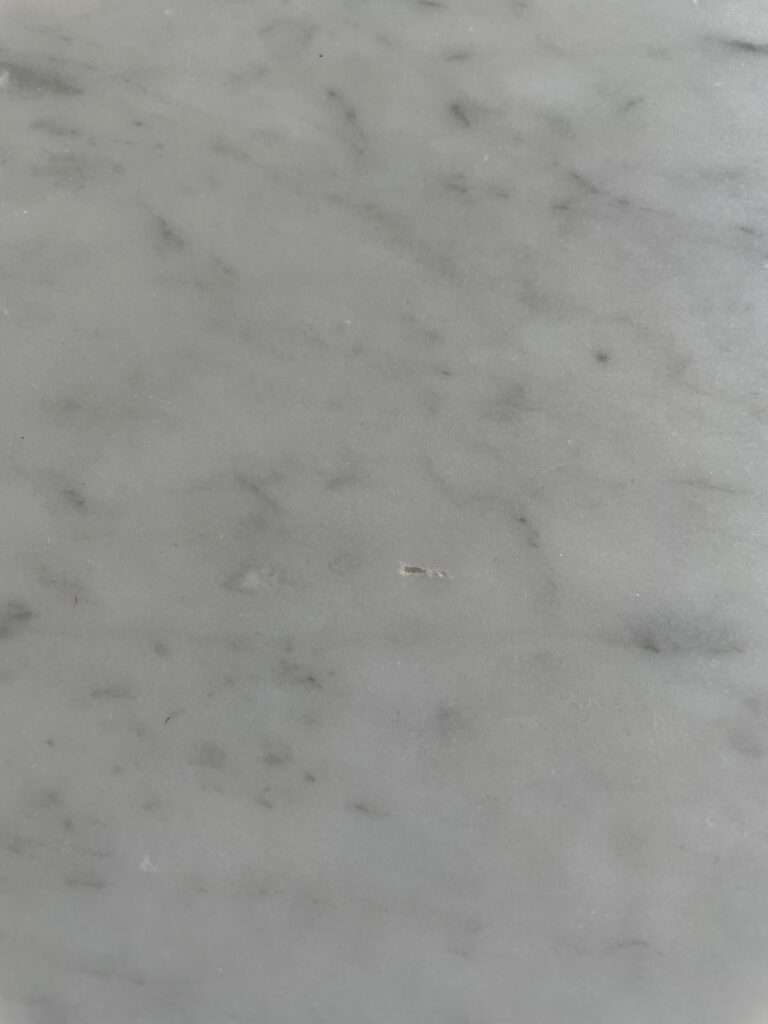
Conclusion
So, can you have marble in your kitchen? The answer is yes, of course! The information in this blog is intended to inform you fully of the realities of living with a marble work surface. When I walk into the kitchen, I know 100% that i made the right decision in going for marble. I also fully understand that for some people it may drive them crazy.
If you are the type to worry about marks in the stone or be panicked every time someone puts a cup down, then perhaps this isn’t the material for you. The good news for you however, is that we offer plenty of products that are more maintenance friendly in our current stock. Products such as quartz from Radianz, Cullifords quartz or ultra compact surfaces from Sapienstone. There are also a plethora of granite or quartzite options that you can see at our yard in full.
At Cullifords, we inspire the customer to make informed choices about stone. So, if you have an upcoming project requiring stone slab or tile, contact Cullifords . Our yard is open and waiting for you to find your perfect material.
This blog was written by Matthew Leary, Business Development Manager at Cullifords. For any questions regarding the use of marble in a kitchen environment, feel free to email matthew@geraldculliford.co.uk
 African Red
African Red  Alba Chiara
Alba Chiara  Alicante
Alicante  Alma Grey
Alma Grey  Amazonite
Amazonite  Andromeda White
Andromeda White  Angola Black
Angola Black  Angola Silver
Angola Silver  Antique Gold
Antique Gold  Aqua Marina
Aqua Marina  Arabescato Cervaiole
Arabescato Cervaiole  Arabescato Corchia
Arabescato Corchia  Arabescato Orobico Grigio
Arabescato Orobico Grigio  Arabescato Orobico Rosso
Arabescato Orobico Rosso 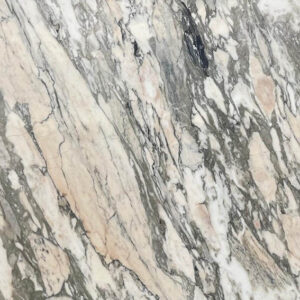 Arabescato Portugal
Arabescato Portugal  Arabescato Vagli
Arabescato Vagli  Aran White
Aran White  Arctic Cream
Arctic Cream  Astoria
Astoria  Atlantic Stone
Atlantic Stone  Aurisina Fiorito
Aurisina Fiorito  Avalanche
Avalanche  Azul Aran
Azul Aran  Azul Bahia
Azul Bahia  Azul Boquira
Azul Boquira  Azul Extremadura
Azul Extremadura  Azul Imperial
Azul Imperial  Azul Louro
Azul Louro  Azul Macaubas
Azul Macaubas  Azul Platino
Azul Platino  Baltic Brown
Baltic Brown  Baltic Green
Baltic Green  Basaltina
Basaltina Bateig Beige
Bateig Beige  Bateig Blue
Bateig Blue  Belgian Black
Belgian Black  Belgian Fossil
Belgian Fossil  Belize
Belize 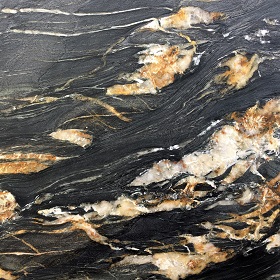 Belvedere
Belvedere  Bethel White
Bethel White  Bianco Covelano
Bianco Covelano  Bianco Iberico
Bianco Iberico  Bianco Ibiza
Bianco Ibiza  Bianco Lasa Marble
Bianco Lasa Marble Bianco Macaubas
Bianco Macaubas  Bianco V
Bianco V Black Forest
Black Forest  Black Horse
Black Horse  Black Ice
Black Ice Black Silk
Black Silk  Black Tempest
Black Tempest  Blackwood
Blackwood  Bleu de Sovoie
Bleu de Sovoie  Blue De Savoie
Blue De Savoie  Blue Eyes
Blue Eyes 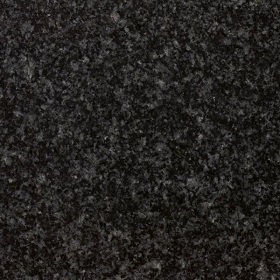 Bon Accord
Bon Accord  Botticino Classico
Botticino Classico  Botticino Fiorito
Botticino Fiorito  Breccia Capraia
Breccia Capraia  Breccia Fantastico
Breccia Fantastico  Breccia Medicea
Breccia Medicea  Breccia Supreme
Breccia Supreme  Brown Silk
Brown Silk  Calacatta
Calacatta Calacatta Apuano
Calacatta Apuano  Calacatta Imperial
Calacatta Imperial  Calacatta Michaelangelo
Calacatta Michaelangelo 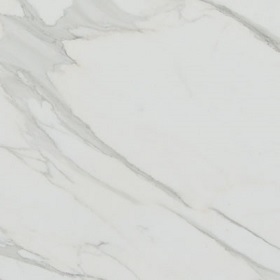 Calacatta Oro
Calacatta Oro  Calacatta Portugal
Calacatta Portugal  Calacatta Rosata
Calacatta Rosata  Calacatta Vagli
Calacatta Vagli 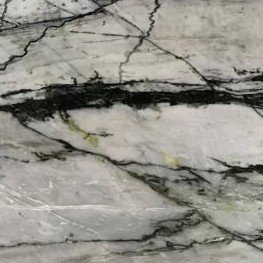 Calacatta Verde
Calacatta Verde  Calacatta Viola
Calacatta Viola  Calacatta Viola Estramoz
Calacatta Viola Estramoz  Calacatta Viola Fantastico
Calacatta Viola Fantastico  Calcite Blue
Calcite Blue Campobello
Campobello  Capolavoro
Capolavoro  Caravaggio Marble
Caravaggio Marble 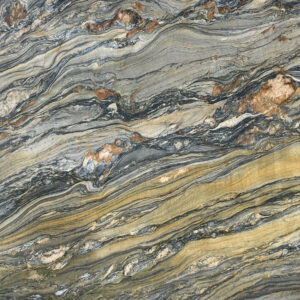 Caravaggio Quartzite
Caravaggio Quartzite  Carib Gold
Carib Gold  Carrara
Carrara  Colonial Gold
Colonial Gold  Colonial White
Colonial White  Confusion
Confusion Copenhagen
Copenhagen  Cosmic Black
Cosmic Black  Costa Smeralda
Costa Smeralda  Crema Evora
Crema Evora  Crema Evora Venato
Crema Evora Venato  Crema Marfil
Crema Marfil  Cristallo
Cristallo  Crystal Blue
Crystal Blue  Cullifords Ceramic – Agata Atena
Cullifords Ceramic – Agata Atena  Cullifords Ceramic – Agata Black
Cullifords Ceramic – Agata Black  Cullifords Ceramic – Agata Blu
Cullifords Ceramic – Agata Blu  Cullifords Ceramic – Amazonite
Cullifords Ceramic – Amazonite  Cullifords Ceramic – Arabescato Orobico
Cullifords Ceramic – Arabescato Orobico  Cullifords Ceramic – Arabescato Statuario
Cullifords Ceramic – Arabescato Statuario  Cullifords Ceramic – Azul Bateig Limestone
Cullifords Ceramic – Azul Bateig Limestone  Cullifords Ceramic – Azul Macaubas
Cullifords Ceramic – Azul Macaubas  Cullifords Ceramic – Bardiglio Chiaro
Cullifords Ceramic – Bardiglio Chiaro  Cullifords Ceramic – Basaltina Antracite
Cullifords Ceramic – Basaltina Antracite  Cullifords Ceramic – Basaltina Grey
Cullifords Ceramic – Basaltina Grey  Cullifords Ceramic – Basaltina Moka
Cullifords Ceramic – Basaltina Moka  Cullifords Ceramic – Basaltina Sand
Cullifords Ceramic – Basaltina Sand  Cullifords Ceramic – Basaltina White
Cullifords Ceramic – Basaltina White  Cullifords Ceramic – Bianco
Cullifords Ceramic – Bianco  Cullifords Ceramic – Bianco Calacatta
Cullifords Ceramic – Bianco Calacatta  Cullifords Ceramic – Bianco Carrara
Cullifords Ceramic – Bianco Carrara  Cullifords Ceramic – Bianco Covelano
Cullifords Ceramic – Bianco Covelano  Cullifords Ceramic – Bianco Statuario
Cullifords Ceramic – Bianco Statuario  Cullifords Ceramic – Black Plate
Cullifords Ceramic – Black Plate  Cullifords Ceramic – Blue Zinc
Cullifords Ceramic – Blue Zinc  Cullifords Ceramic – Brilliant Green
Cullifords Ceramic – Brilliant Green  Cullifords Ceramic – Brown Quartz
Cullifords Ceramic – Brown Quartz  Cullifords Ceramic – Brown Zinc
Cullifords Ceramic – Brown Zinc  Cullifords Ceramic – Calacatta
Cullifords Ceramic – Calacatta  Cullifords Ceramic – Calacatta Bellissimo
Cullifords Ceramic – Calacatta Bellissimo  Cullifords Ceramic – Calacatta Dorato
Cullifords Ceramic – Calacatta Dorato Cullifords Ceramic – Calacatta Elite
Cullifords Ceramic – Calacatta Elite Cullifords Ceramic – Calacatta Light
Cullifords Ceramic – Calacatta Light  Cullifords Ceramic – Calacatta Lincoln
Cullifords Ceramic – Calacatta Lincoln  Cullifords Ceramic – Calacatta Macchia Vecchia
Cullifords Ceramic – Calacatta Macchia Vecchia  Cullifords Ceramic – Calacatta Supremo
Cullifords Ceramic – Calacatta Supremo Cullifords Ceramic – Calacatta Viola
Cullifords Ceramic – Calacatta Viola  Cullifords Ceramic – Calce
Cullifords Ceramic – Calce  Cullifords Ceramic – Capraia
Cullifords Ceramic – Capraia  Cullifords Ceramic – Cardosa
Cullifords Ceramic – Cardosa  Cullifords Ceramic – Cloud
Cullifords Ceramic – Cloud  Cullifords Ceramic – Crema Delicato
Cullifords Ceramic – Crema Delicato  Cullifords Ceramic – Crema Luna
Cullifords Ceramic – Crema Luna  Cullifords Ceramic – Crema Marfil
Cullifords Ceramic – Crema Marfil  Cullifords Ceramic – Crystal Dark
Cullifords Ceramic – Crystal Dark  Cullifords Ceramic – Crystal Grey
Cullifords Ceramic – Crystal Grey  Cullifords Ceramic – Crystal Sky
Cullifords Ceramic – Crystal Sky  Cullifords Ceramic – Daino Grigio
Cullifords Ceramic – Daino Grigio  Cullifords Ceramic – Dark Emperador
Cullifords Ceramic – Dark Emperador  Cullifords Ceramic – Dove Grey
Cullifords Ceramic – Dove Grey  Cullifords Ceramic – Earth
Cullifords Ceramic – Earth  Cullifords Ceramic – Ebano
Cullifords Ceramic – Ebano  Cullifords Ceramic – Estremoz
Cullifords Ceramic – Estremoz 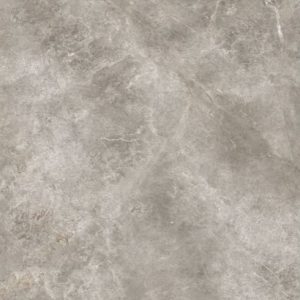 Cullifords Ceramic – Fior Di Bosco
Cullifords Ceramic – Fior Di Bosco  Cullifords Ceramic – Gem Pearl
Cullifords Ceramic – Gem Pearl  Cullifords Ceramic – Gem Rose
Cullifords Ceramic – Gem Rose  Cullifords Ceramic – Gem Violet
Cullifords Ceramic – Gem Violet  Cullifords Ceramic – Gold Onyx
Cullifords Ceramic – Gold Onyx  Cullifords Ceramic – Graphite
Cullifords Ceramic – Graphite  Cullifords Ceramic – Green Onyx Vein Cut
Cullifords Ceramic – Green Onyx Vein Cut  Cullifords Ceramic – Grey Beauty
Cullifords Ceramic – Grey Beauty  Cullifords Ceramic – Grey Marble
Cullifords Ceramic – Grey Marble  Cullifords Ceramic – Grey Onyx Vein Cut
Cullifords Ceramic – Grey Onyx Vein Cut  Cullifords Ceramic – Grey Plate
Cullifords Ceramic – Grey Plate  Cullifords Ceramic – Grey Quartz
Cullifords Ceramic – Grey Quartz  Cullifords Ceramic – Grey Zinc
Cullifords Ceramic – Grey Zinc  Cullifords Ceramic – Grigio Carnico
Cullifords Ceramic – Grigio Carnico  Cullifords Ceramic – Gris De Savoie
Cullifords Ceramic – Gris De Savoie  Cullifords Ceramic – Imperial Grey
Cullifords Ceramic – Imperial Grey  Cullifords Ceramic – Ink
Cullifords Ceramic – Ink  Cullifords Ceramic – Iron
Cullifords Ceramic – Iron  Cullifords Ceramic – Jerusalem Limestone
Cullifords Ceramic – Jerusalem Limestone  Cullifords Ceramic – Light Grey
Cullifords Ceramic – Light Grey  Cullifords Ceramic – Liquid Green
Cullifords Ceramic – Liquid Green  Cullifords Ceramic – Liquid Purple
Cullifords Ceramic – Liquid Purple  Cullifords Ceramic – Luce Black
Cullifords Ceramic – Luce Black  Cullifords Ceramic – Luce Blue
Cullifords Ceramic – Luce Blue  Cullifords Ceramic – Luce Gold
Cullifords Ceramic – Luce Gold  Cullifords Ceramic – Luce Grey
Cullifords Ceramic – Luce Grey  Cullifords Ceramic – Luce Pearl
Cullifords Ceramic – Luce Pearl  Cullifords Ceramic – Luce Silver
Cullifords Ceramic – Luce Silver  Cullifords Ceramic – Michelangelo Altissimo
Cullifords Ceramic – Michelangelo Altissimo  Cullifords Ceramic – Nero
Cullifords Ceramic – Nero  Cullifords Ceramic – Nero Marquina
Cullifords Ceramic – Nero Marquina  Cullifords Ceramic – Onice Ambra
Cullifords Ceramic – Onice Ambra  Cullifords Ceramic – Onice Bianco Extra
Cullifords Ceramic – Onice Bianco Extra  Cullifords Ceramic – Onice Ghiaccio
Cullifords Ceramic – Onice Ghiaccio  Cullifords Ceramic – Onice Grigio
Cullifords Ceramic – Onice Grigio  Cullifords Ceramic – Onice Ivory
Cullifords Ceramic – Onice Ivory  Cullifords Ceramic – Onice Malaga
Cullifords Ceramic – Onice Malaga  Cullifords Ceramic – Onice Miele
Cullifords Ceramic – Onice Miele  Cullifords Ceramic – Onice Nero
Cullifords Ceramic – Onice Nero  Cullifords Ceramic – Onice Persia
Cullifords Ceramic – Onice Persia  Cullifords Ceramic – Onice Pesca
Cullifords Ceramic – Onice Pesca  Cullifords Ceramic – Paonazzetto
Cullifords Ceramic – Paonazzetto  Cullifords Ceramic – Pietra Di Vals
Cullifords Ceramic – Pietra Di Vals  Cullifords Ceramic – Pietra Grey
Cullifords Ceramic – Pietra Grey  Cullifords Ceramic – Pietra Piasentina
Cullifords Ceramic – Pietra Piasentina  Cullifords Ceramic – Piombo
Cullifords Ceramic – Piombo  Cullifords Ceramic – Premium White
Cullifords Ceramic – Premium White  Cullifords Ceramic – Pulpis Bronze
Cullifords Ceramic – Pulpis Bronze  Cullifords Ceramic – Rosso Imperiale
Cullifords Ceramic – Rosso Imperiale  Cullifords Ceramic – Sahara Noir
Cullifords Ceramic – Sahara Noir  Cullifords Ceramic – San Vicente Limestone
Cullifords Ceramic – San Vicente Limestone  Cullifords Ceramic – Silicio
Cullifords Ceramic – Silicio  Cullifords Ceramic – Silver
Cullifords Ceramic – Silver  Cullifords Ceramic – Smoke
Cullifords Ceramic – Smoke  Cullifords Ceramic – Sodalite Blue
Cullifords Ceramic – Sodalite Blue  Cullifords Ceramic – Statuario Altissimo
Cullifords Ceramic – Statuario Altissimo  Cullifords Ceramic – Statuario Ultra
Cullifords Ceramic – Statuario Ultra Cullifords Ceramic – Talc
Cullifords Ceramic – Talc  Cullifords Ceramic – Taupe
Cullifords Ceramic – Taupe  Cullifords Ceramic – Thassos
Cullifords Ceramic – Thassos  Cullifords Ceramic – Tobacco
Cullifords Ceramic – Tobacco  Cullifords Ceramic – Travertino Navona
Cullifords Ceramic – Travertino Navona  Cullifords Ceramic – Travertino Santa Caterina
Cullifords Ceramic – Travertino Santa Caterina  Cullifords Ceramic – Tropical Black
Cullifords Ceramic – Tropical Black  Cullifords Ceramic – Tundra Grey
Cullifords Ceramic – Tundra Grey 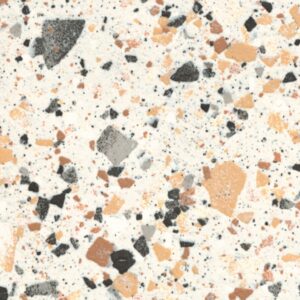 Cullifords Ceramic – Venice Ivory
Cullifords Ceramic – Venice Ivory  Cullifords Ceramic – Venice Zinc
Cullifords Ceramic – Venice Zinc  Cullifords Ceramic – Verde Karzai
Cullifords Ceramic – Verde Karzai  Cullifords Ceramic – Verde St. Denis
Cullifords Ceramic – Verde St. Denis  Cullifords Ceramic – White Beauty
Cullifords Ceramic – White Beauty  Cullifords Ceramic – White Quartz
Cullifords Ceramic – White Quartz  Cullifords Quartz – Alpine Shimmer
Cullifords Quartz – Alpine Shimmer Cullifords Quartz – Bianco Eclipsia
Cullifords Quartz – Bianco Eclipsia Cullifords Quartz – Calacatta Amber
Cullifords Quartz – Calacatta Amber Cullifords Quartz – Calacatta Oro
Cullifords Quartz – Calacatta Oro Cullifords Quartz – Calacatta Vagli Oro (Book-Matched)
Cullifords Quartz – Calacatta Vagli Oro (Book-Matched) Cullifords Quartz – Carrara
Cullifords Quartz – Carrara Cullifords Quartz – Carrara Zero (less than 1% Silica)
Cullifords Quartz – Carrara Zero (less than 1% Silica) Cullifords Quartz – Enigma
Cullifords Quartz – Enigma Cullifords Quartz – Grey Concrete
Cullifords Quartz – Grey Concrete Cullifords Quartz – Grey Mirror
Cullifords Quartz – Grey Mirror Cullifords Quartz – Grey Shimmer
Cullifords Quartz – Grey Shimmer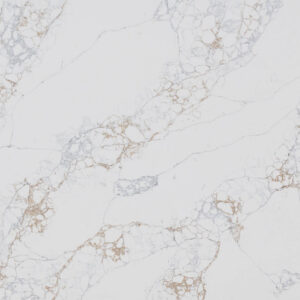 Cullifords Quartz – Medicea (Book-Matched)
Cullifords Quartz – Medicea (Book-Matched) Cullifords Quartz – Misty Carrara Satinato
Cullifords Quartz – Misty Carrara Satinato Cullifords Quartz – Polido
Cullifords Quartz – Polido Cullifords Quartz – White Mirror
Cullifords Quartz – White Mirror Daino Reale
Daino Reale  Dakota Mahogany
Dakota Mahogany  Diamond Fall
Diamond Fall  Dolce Vita
Dolce Vita  Dolomite White
Dolomite White  Dove Nuvolato
Dove Nuvolato  Dover White
Dover White  Duke Black
Duke Black  Duke White
Duke White  Ebony
Ebony  Elegante Grey
Elegante Grey  Emerald Glitter
Emerald Glitter  Emperador
Emperador  Eramosa Crosscut
Eramosa Crosscut Eramosa Vein Cut
Eramosa Vein Cut  Estramoz
Estramoz  Fior Di Bosco
Fior Di Bosco 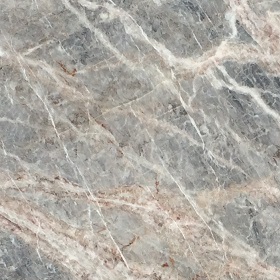 Fior Di Pesco Carnico
Fior Di Pesco Carnico  Four Seasons
Four Seasons  Fusion Blue
Fusion Blue  Fusion Explosion
Fusion Explosion Fusion Fire
Fusion Fire  Fusion Green
Fusion Green Fusion Wow Multicolour
Fusion Wow Multicolour  Galaxy
Galaxy 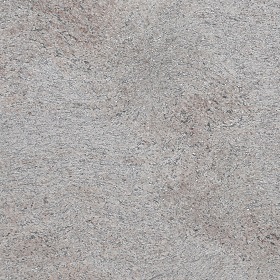 Ghibli
Ghibli  Gold Macaubus
Gold Macaubus  Golden Eclipse
Golden Eclipse  Golden Spice
Golden Spice  Gran Perla
Gran Perla  Grand Antique
Grand Antique Grand Constantine
Grand Constantine Green Galaxy
Green Galaxy  Grey Marquina
Grey Marquina  Grigio Billiemi
Grigio Billiemi  Grigio Carnico
Grigio Carnico  Gris Pulpis
Gris Pulpis 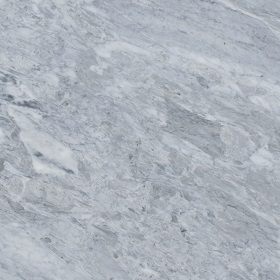 Gris Versilia
Gris Versilia  Himalayan White
Himalayan White  Iron Red
Iron Red  Ivory Fantasy
Ivory Fantasy  Ivory Onyx
Ivory Onyx  Jade
Jade  Jade River
Jade River Jordan Pink
Jordan Pink  Juparana Bordeaux
Juparana Bordeaux  Juparana Indiano
Juparana Indiano  Juparana Rio
Juparana Rio  Jura Beige
Jura Beige  Jura Blue Grey
Jura Blue Grey  Jurassic Green
Jurassic Green Kashmir Gold
Kashmir Gold  Kashmir White
Kashmir White  Katuba Blue
Katuba Blue Kuru Grey
Kuru Grey  Labrador Black
Labrador Black  Labradorite Bianca
Labradorite Bianca 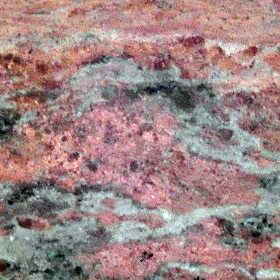 Lady Dream
Lady Dream  Lagoa Pink
Lagoa Pink  Laguna Blue
Laguna Blue  Lemon Spice
Lemon Spice  Lemurian Blue
Lemurian Blue  Lilac
Lilac  London White
London White  Louise Blue
Louise Blue  Luana Multicolour
Luana Multicolour  Luna Pearl
Luna Pearl  LUNDHS Antique
LUNDHS Antique  LUNDHS Antique Silk
LUNDHS Antique Silk  LUNDHS Blue
LUNDHS Blue  LUNDHS Blue Silk
LUNDHS Blue Silk  LUNDHS Emerald
LUNDHS Emerald  LUNDHS Emerald Silk
LUNDHS Emerald Silk  LUNDHS Royal
LUNDHS Royal  LUNDHS Royal Silk
LUNDHS Royal Silk  Macaubas Sky
Macaubas Sky  Magma Black
Magma Black  Magma Gold
Magma Gold  Magnesite
Magnesite  Majestic Brown
Majestic Brown  Marinace Aquarius
Marinace Aquarius  Marinace Black and Gold
Marinace Black and Gold  Marinace Black and White
Marinace Black and White  Marinace Rosso
Marinace Rosso  Marinace Verde
Marinace Verde  Marron Coheiba
Marron Coheiba 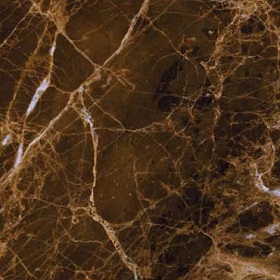 Marron Imperial
Marron Imperial Matrix Satinato
Matrix Satinato  Maui
Maui  Meteorus
Meteorus 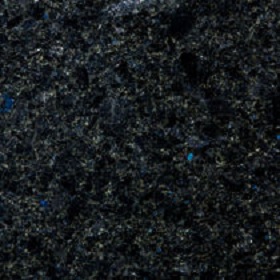 Midnight Blue
Midnight Blue 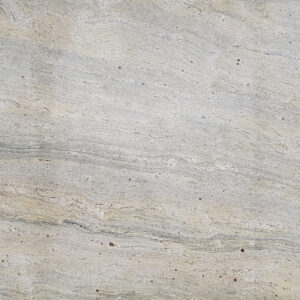 Millenium Cream
Millenium Cream  Moca Creme
Moca Creme  Moleanos
Moleanos  Moleanos Blue
Moleanos Blue  Moleanos Fine Grain
Moleanos Fine Grain  Moon Agate
Moon Agate  Moroccan Black Fossil
Moroccan Black Fossil  Moroccan Brown Fossil
Moroccan Brown Fossil  Mosaikus
Mosaikus  Nero Marquina
Nero Marquina Nero Portoro
Nero Portoro 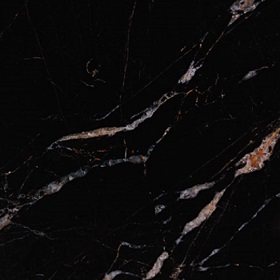 Noir St. Laurent
Noir St. Laurent  Nordic Sunset
Nordic Sunset  Norwegian Rose
Norwegian Rose  Nuvola
Nuvola  Occhio di Pavone
Occhio di Pavone  Ocean Storm
Ocean Storm  Olive Green
Olive Green  Onyx Cappucino
Onyx Cappucino  Onyx Green
Onyx Green  Onyx Honey
Onyx Honey  Onyx Pink
Onyx Pink  Onyx Smeraldo
Onyx Smeraldo  Opera D’Arte
Opera D’Arte  Optimum Ceramics – Arabescato Corchia
Optimum Ceramics – Arabescato Corchia  Optimum Ceramics – Atlantic Grey
Optimum Ceramics – Atlantic Grey  Optimum Ceramics – Black Marquina
Optimum Ceramics – Black Marquina  Optimum Ceramics – Black Tempest
Optimum Ceramics – Black Tempest  Optimum Ceramics – Borghini
Optimum Ceramics – Borghini  Optimum Ceramics – Calacatta Gold
Optimum Ceramics – Calacatta Gold  Optimum Ceramics – Calacatta Matarazzo
Optimum Ceramics – Calacatta Matarazzo  Optimum Ceramics – Calacatta Supreme
Optimum Ceramics – Calacatta Supreme  Optimum Ceramics – Concrete Graphite
Optimum Ceramics – Concrete Graphite  Optimum Ceramics – Concrete Light Grey
Optimum Ceramics – Concrete Light Grey  Optimum Ceramics – Concrete White
Optimum Ceramics – Concrete White  Optimum Ceramics – Fior Di Bosco
Optimum Ceramics – Fior Di Bosco  Optimum Ceramics – Gold Laurent
Optimum Ceramics – Gold Laurent  Optimum Ceramics – Imperial Brown
Optimum Ceramics – Imperial Brown  Optimum Ceramics – Limestone Ivory
Optimum Ceramics – Limestone Ivory  Optimum Ceramics – Macchia Vecchia
Optimum Ceramics – Macchia Vecchia  Optimum Ceramics – Pietra Di Fez
Optimum Ceramics – Pietra Di Fez  Optimum Ceramics – Pietra Grey
Optimum Ceramics – Pietra Grey  Optimum Ceramics – Portland
Optimum Ceramics – Portland  Optimum Ceramics – Statuario
Optimum Ceramics – Statuario  Optimum Ceramics – Super White
Optimum Ceramics – Super White  Optimum Ceramics – Taj Mahal
Optimum Ceramics – Taj Mahal  Optimum Ceramics – Travertino Classico
Optimum Ceramics – Travertino Classico  Pakistan Black and Gold
Pakistan Black and Gold Palissandro Black
Palissandro Black 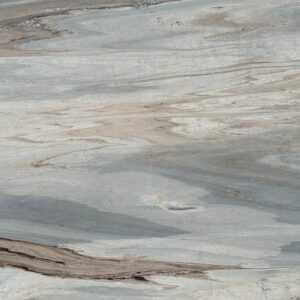 Palissandro Bluette
Palissandro Bluette  Palissandro Classico
Palissandro Classico  Palissandro Nuvolato
Palissandro Nuvolato  Panda White
Panda White  Panna Fragola
Panna Fragola  Paradiso Classico
Paradiso Classico  Patagonia
Patagonia  Pegasus
Pegasus  Perla Beige
Perla Beige  Pietra Del Cardosa
Pietra Del Cardosa  Pietra Lavica
Pietra Lavica  Pietra Piasentina
Pietra Piasentina  Pietra Serena
Pietra Serena  Piracema
Piracema  Platinum Macaubus
Platinum Macaubus  Radianz – Mystic Platinum
Radianz – Mystic Platinum  Radianz – Alluring
Radianz – Alluring  Radianz – Antique Brown
Radianz – Antique Brown  Radianz – Argento Gold
Radianz – Argento Gold  Radianz – Calacatta Alya
Radianz – Calacatta Alya  Radianz – Carola
Radianz – Carola  Radianz – Diamond White
Radianz – Diamond White  Radianz – Everest White
Radianz – Everest White  Radianz – Hercules
Radianz – Hercules  Radianz – Kunlun Ink
Radianz – Kunlun Ink  Radianz – Lucern Lake
Radianz – Lucern Lake  Radianz – Mare Blu
Radianz – Mare Blu  Radianz – Mariposa Buff
Radianz – Mariposa Buff  Radianz – Mirama Bronze
Radianz – Mirama Bronze  Radianz – Orion
Radianz – Orion  Radianz – Rio
Radianz – Rio  Radianz – Royal Marfil
Radianz – Royal Marfil  Radianz – Ural Grey
Radianz – Ural Grey  Radianz- Antique Green
Radianz- Antique Green  Rainforest Green
Rainforest Green  Roma Blue
Roma Blue  Rosa Tea
Rosa Tea  Rose Aurora
Rose Aurora  Rose Aurora Estramoz
Rose Aurora Estramoz  Rose Aurora Macchia Vecchia
Rose Aurora Macchia Vecchia  Rose Noir
Rose Noir  Rosso Bilbao
Rosso Bilbao  Rosso Damascus
Rosso Damascus  Rosso Dante
Rosso Dante  Rosso Levanto
Rosso Levanto  Rosso Luana
Rosso Luana  Rosso Verona
Rosso Verona  Royal Blue
Royal Blue  Ruivina
Ruivina Salome
Salome  San Simone
San Simone  Sapien Stone – Alaska White
Sapien Stone – Alaska White  Sapien Stone – Arabescato
Sapien Stone – Arabescato  Sapien Stone – Balance – Chester Green
Sapien Stone – Balance – Chester Green  Sapien Stone – Balance – Ivory
Sapien Stone – Balance – Ivory  Sapien Stone – Balance – Luna Limestone
Sapien Stone – Balance – Luna Limestone  Sapien Stone – Balance – Masala Red
Sapien Stone – Balance – Masala Red  Sapien Stone – Balance – Nude
Sapien Stone – Balance – Nude  Sapien Stone – Basalt Black
Sapien Stone – Basalt Black  Sapien Stone – Basalt Cream
Sapien Stone – Basalt Cream  Sapien Stone – Bianco Lasa
Sapien Stone – Bianco Lasa  Sapien Stone – Black Diamond
Sapien Stone – Black Diamond  Sapien Stone – Breccia Imperiale
Sapien Stone – Breccia Imperiale  Sapien Stone – Bright Onyx
Sapien Stone – Bright Onyx  Sapien Stone – Brown Earth
Sapien Stone – Brown Earth 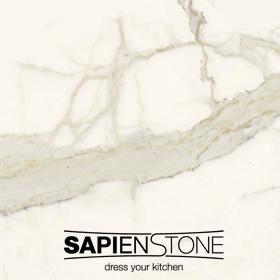 Sapien Stone – Calacatta
Sapien Stone – Calacatta  Sapien Stone – Calacatta Light
Sapien Stone – Calacatta Light  Sapien Stone – Calacatta Macchia Vecchia
Sapien Stone – Calacatta Macchia Vecchia 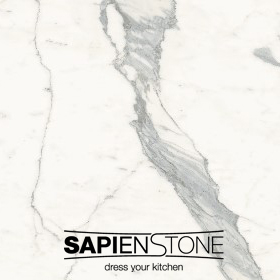 Sapien Stone – Calacatta Statuario
Sapien Stone – Calacatta Statuario  Sapien Stone – Calacatta Viola
Sapien Stone – Calacatta Viola  Sapien Stone – Ceppo Varese
Sapien Stone – Ceppo Varese  Sapien Stone – Crema Neve
Sapien Stone – Crema Neve  Sapien Stone – Dark Marquina
Sapien Stone – Dark Marquina  Sapien Stone – Fior Di Bosco
Sapien Stone – Fior Di Bosco  Sapien Stone – Grand Antique 4D
Sapien Stone – Grand Antique 4D 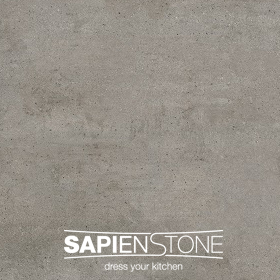 Sapien Stone – Grey Earth
Sapien Stone – Grey Earth  Sapien Stone – Grigio Savelli – Cashmere
Sapien Stone – Grigio Savelli – Cashmere  Sapien Stone – Kuroca 4D
Sapien Stone – Kuroca 4D  Sapien Stone – Light Earth
Sapien Stone – Light Earth  Sapien Stone – Malm Black
Sapien Stone – Malm Black 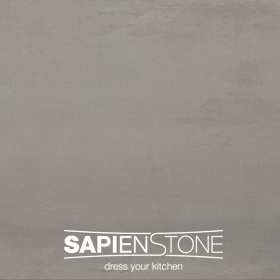 Sapien Stone – Malm Grey
Sapien Stone – Malm Grey  Sapien Stone – Noir
Sapien Stone – Noir  Sapien Stone – Palladium Grey
Sapien Stone – Palladium Grey  Sapien Stone – Piasentina
Sapien Stone – Piasentina  Sapien Stone – Pietra Grey
Sapien Stone – Pietra Grey  Sapien Stone – Platinum White
Sapien Stone – Platinum White  Sapien Stone – Premium White
Sapien Stone – Premium White  Sapien Stone – Rovere Baio
Sapien Stone – Rovere Baio  Sapien Stone – Rovere Buckskin
Sapien Stone – Rovere Buckskin  Sapien Stone – Sand Earth
Sapien Stone – Sand Earth  Sapien Stone – Seminato Beige
Sapien Stone – Seminato Beige  Sapien Stone – Seminato Candido
Sapien Stone – Seminato Candido  Sapien Stone – Seminato Nero
Sapien Stone – Seminato Nero  Sapien Stone – Silver Wave 4D
Sapien Stone – Silver Wave 4D  Sapien Stone – Taj Mahal
Sapien Stone – Taj Mahal  Sapien Stone – Uni Ice
Sapien Stone – Uni Ice  Sapien Stone – Urban Antracite
Sapien Stone – Urban Antracite  Sapien Stone – Urban Argento
Sapien Stone – Urban Argento  Sapphire Brown
Sapphire Brown  Sea Bed
Sea Bed Semi Precious Panel – Amazonite
Semi Precious Panel – Amazonite  Semi Precious Panel – Amethyst
Semi Precious Panel – Amethyst  Semi Precious Panel – Blue Agate
Semi Precious Panel – Blue Agate  Semi Precious Panel – Grey Agate
Semi Precious Panel – Grey Agate  Semi Precious Panel – Iron Pyrite
Semi Precious Panel – Iron Pyrite  Semi Precious Panel – Jaguar
Semi Precious Panel – Jaguar  Semi Precious Panel – Lapis Lazuli
Semi Precious Panel – Lapis Lazuli  Semi Precious Panel – Malachite
Semi Precious Panel – Malachite  Semi Precious Panel – Mother of Pearl
Semi Precious Panel – Mother of Pearl  Semi Precious Panel – Picasso Gem
Semi Precious Panel – Picasso Gem  Semi Precious Panel – Rose Quartz
Semi Precious Panel – Rose Quartz  Semi Precious Panel – Tigers Eye
Semi Precious Panel – Tigers Eye  Sequoia
Sequoia  Shiwakashi
Shiwakashi  Silver Black Onyx
Silver Black Onyx  Silver Cloud
Silver Cloud  Silver Wave
Silver Wave  Silver Wind
Silver Wind  Sivec
Sivec  Sky Blue
Sky Blue  Sodalite Blue Marble
Sodalite Blue Marble St. Hubert
St. Hubert  Stargate
Stargate 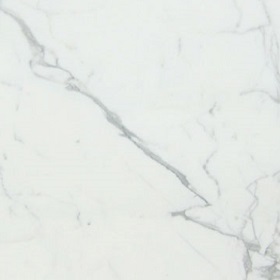 Statuary
Statuary  Steel Grey
Steel Grey  Stonethica – Bardiglio
Stonethica – Bardiglio  Stonethica – Carrara Mix
Stonethica – Carrara Mix  Stonethica – Pietra Cardoso
Stonethica – Pietra Cardoso  Strata Brown
Strata Brown  Stratus Boquira
Stratus Boquira  Striato Olympo
Striato Olympo  Super White
Super White  Taj Mahal
Taj Mahal  Tan Brown
Tan Brown  Terra Bianca
Terra Bianca  Thassos
Thassos Thunder White
Thunder White  Titanium Blue
Titanium Blue  Topaz White
Topaz White  Travertine Classic
Travertine Classic  Travertine Cross-Cut
Travertine Cross-Cut  Travertine Light
Travertine Light  Travertine Red
Travertine Red  Travertine Silver
Travertine Silver  Tropical Black
Tropical Black  Tropical Green Quartzite
Tropical Green Quartzite  Tundra
Tundra  Tuscan White
Tuscan White  Typhoon Green
Typhoon Green 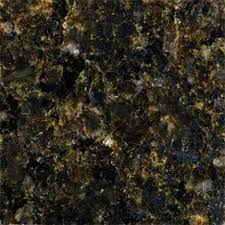 Ubatuba
Ubatuba  Utopia
Utopia Valley White
Valley White  Verde Alpi
Verde Alpi  Verde Antiqua
Verde Antiqua  Verde Bamboo
Verde Bamboo  Verde Cosmopolitan
Verde Cosmopolitan Verde Cristina
Verde Cristina Verde Fantastico
Verde Fantastico  Verde Italia
Verde Italia  Verde Lapponia
Verde Lapponia  Verde Levanto
Verde Levanto  Verde Luana
Verde Luana  Verde Marina
Verde Marina  Verde Olomont
Verde Olomont  Verde Savannah
Verde Savannah  Verde St. Denis
Verde St. Denis  Verde Tabriz
Verde Tabriz  Verde Tinos
Verde Tinos  Verde Vitoria
Verde Vitoria Via Lattea
Via Lattea  Visag Blue
Visag Blue  Viscount White
Viscount White  Vivaldi
Vivaldi  Volakas
Volakas  Volcano Quartzite
Volcano Quartzite  Volga Blue
Volga Blue  Vratza
Vratza  White Beauty
White Beauty  White Ice
White Ice  White Onyx
White Onyx  Whitewood
Whitewood  Wild West
Wild West  Zimbabwe
Zimbabwe 